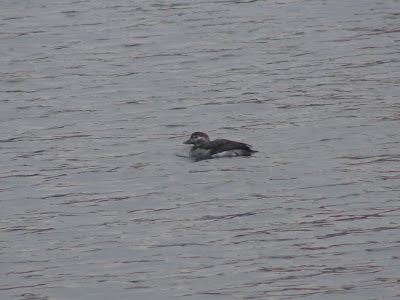The article is in reference to a report that came out yesterday called 'The state of the UK's birds 2012', compiled by three NGO's (RSPB, BTO, WWT) and a number of governmental agencies. If you care at all about UK birds, those inhabiting our overseas territories and the wider environment you should probably read it.
It's a beautifully presented report, packed full of information. Did you know that two UK seaducks, velvet scoters and long-tailed ducks, are considered to be threatened with extinction globally? (Page 2) I didn't. Or that of all UK breeding bird species, Willow tits have declined the most since the Breeding Bird Survey started in 1994? (page 15). For a bird that I am particularly fond of, the Kittiwake, the last 25 years have been a struggle with the Seabird Monitoring Programme showing birds declining by 55% between 1986 and 2011 (Page 16). It was interesting to see the comparisons between breeding populations and biomass estimates. While native breeding birds amount to nearly 80.5million pairs, non natives contribute only around 3% of the total number at around 2.5m pairs. But as the report points out, with pheasants and some geese included in the non-natives number, when biomass is estimated, those lardy birds account for around 23% of the total UK avian biomass. This highlights the potential for these species to impact on the ecosystems to which they contribute (something that also cropped up with 'Buzzardgate' earlier this year).
Anyway, it's all these facts and figures and many many more that result in that headline above; the number of breeding pairs in the UK has fallen from approximately 105 million in 1966 to 83 million in 2008+, so a loss of 22 million pairs (or 44 million birds). Massive.
The report doesn't explain this loss but then that's not it's intention, it's value is in all that amazing hard-earned data. Without it we wouldn't know what we were missing until it was gone. I guess I wasn't that shocked by the article really, more provoking in a way was one by the ever-reliable George Monbiot in response. In his article he decries the loss of interest in nature by children or what he terms the "second environmental crisis - the removal of children from the natural world". I think he's right to link the two and when he says "most of those I know who fight for nature are people who spent their childhoods immersed in it" he has a point.
 |
Long-tailed Duck (Clangula hyemalis) - first winter bird in Chatham docks, November 2011.
The only one I've seen, I really hope it's not the last.
|
No comments:
Post a Comment